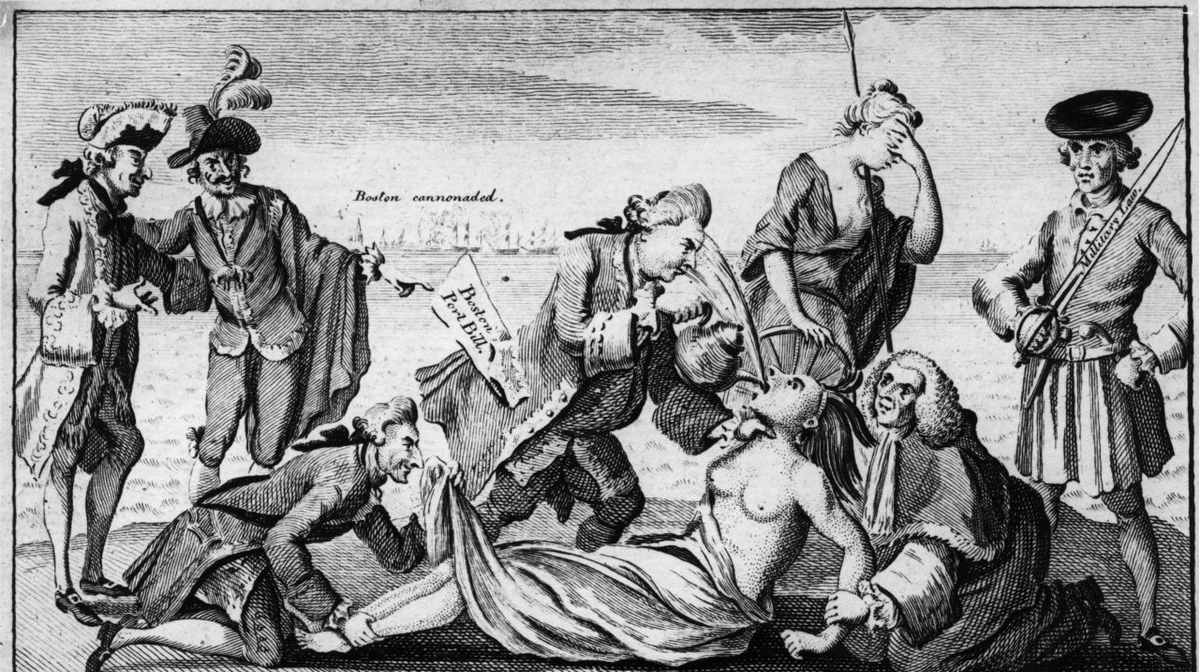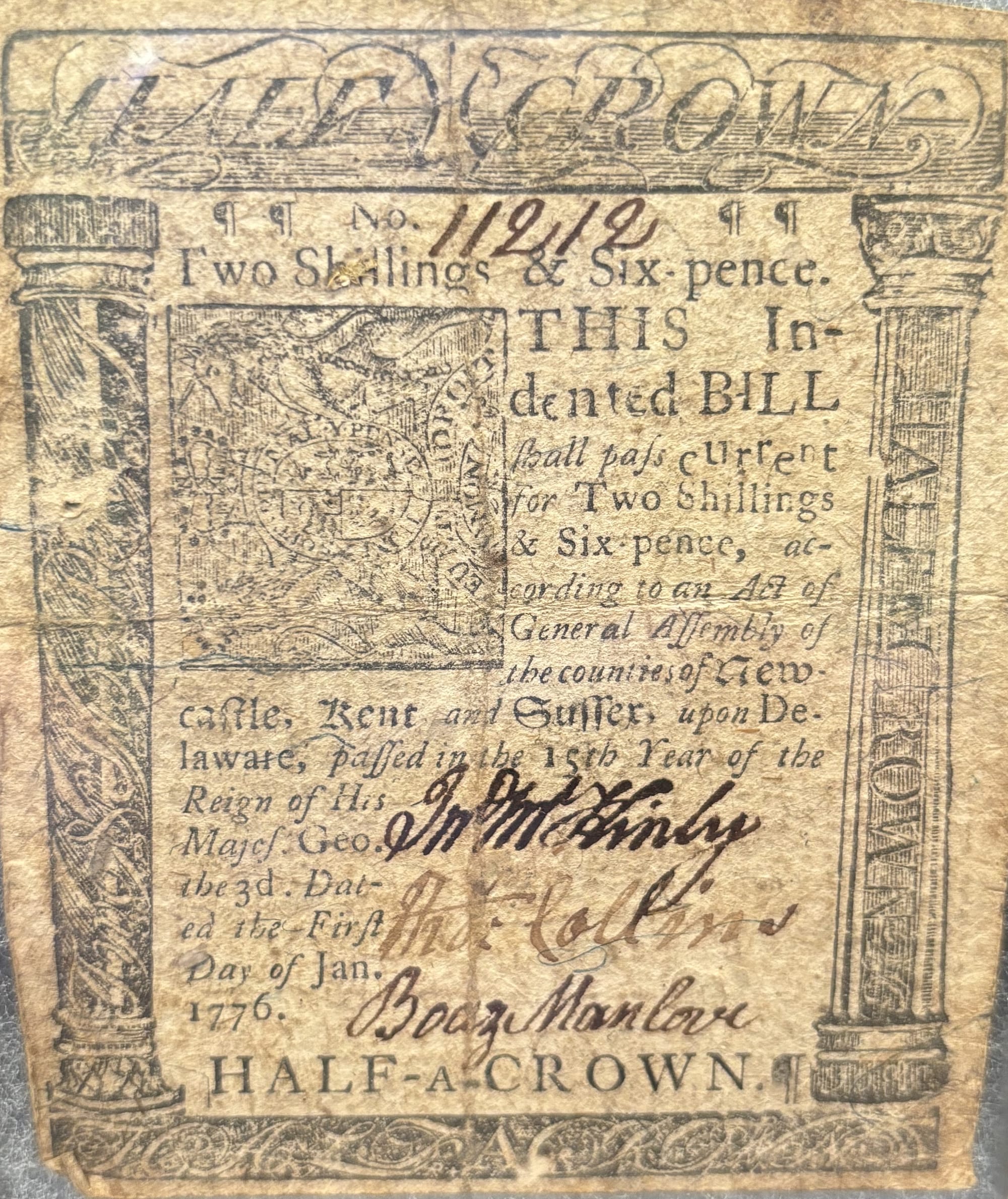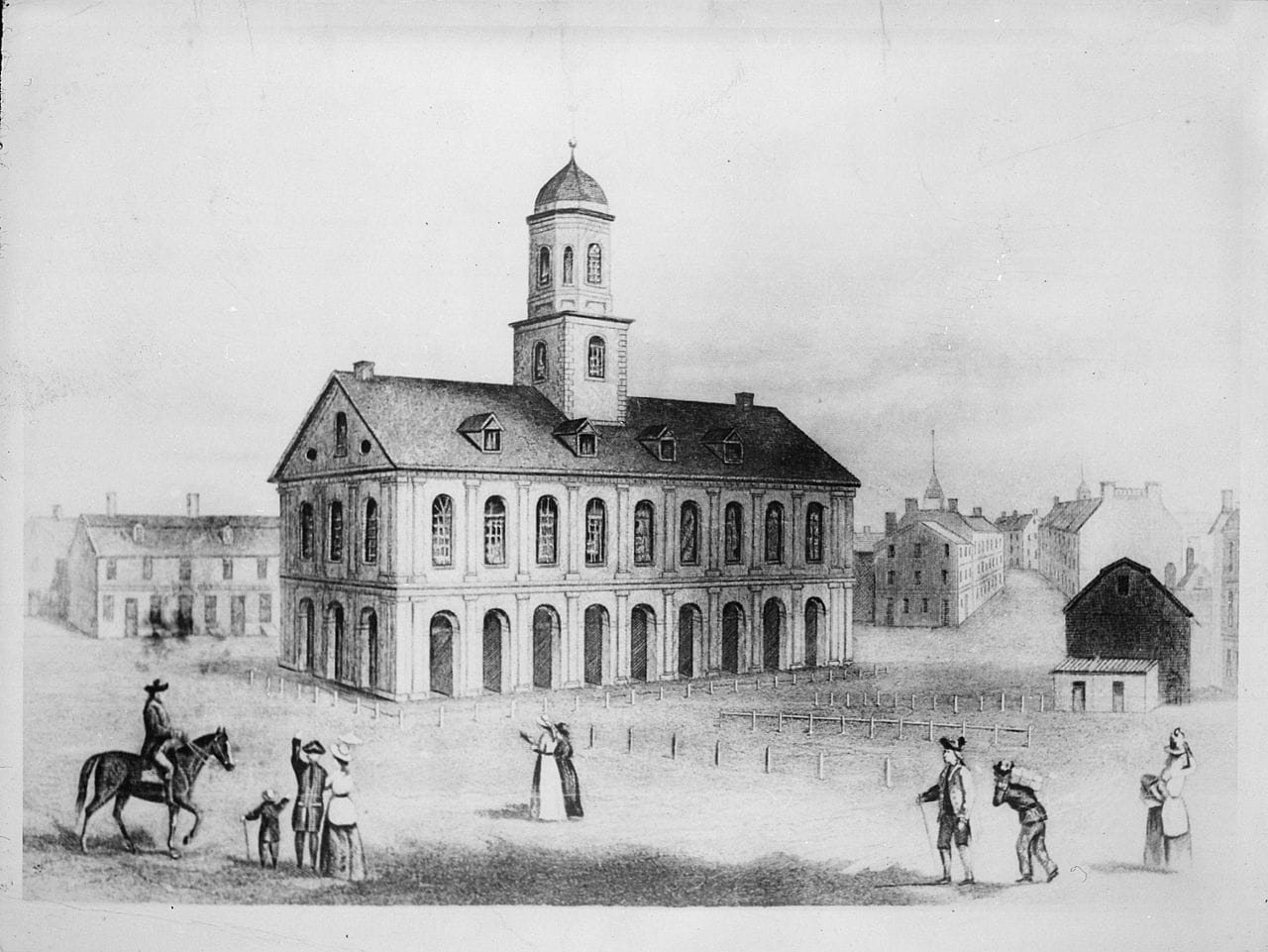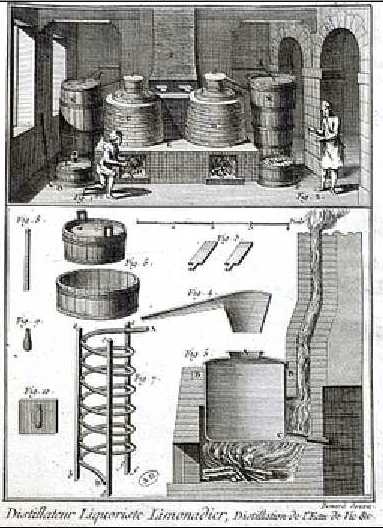How Rum Changed the World

How significant was the role of rum in the Massachusetts economy before the Revolution? Exploring this seemingly simple question can offer a fresh perspective on the motivations behind pivotal decisions made by both sides leading up to the Revolution. For instance, what prompted the Boston Tea Party on December 16, 1773, while other colonies seemed less perturbed by the Molasses, Sugar, and Stamp Acts? Why did Parliament target Boston with the Boston Port Act on March 25, 1774, ultimately resulting in the blockade of Boston Harbor on June 1, 1774, as opposed to the larger city of Philadelphia? It is true that Boston, as the third-largest city, played a crucial role in the shipping trade, making a blockade particularly crippling. However, the question remains: why not Philadelphia or New York City?
Massachusetts’ economy bore a disproportionate impact from these "Acts," and people took exception when their wallets were directly affected. So, how extensive was the influence of the rum supply chain—encompassing shipping, trade, manufacture, and consumption—on the local economy?
By most accounts every adult male drank rum. Regardless of whether they imbibed, every male participated in the tradition of Training Day at local taverns for militia drills, which often involved the consumption of rum. According to John J. McCusker's research, the annual per capita rum consumption in Massachusetts was a staggering 8 gallons—twice the average for all the colonies combined. It's worth noting that this estimation includes women and children who typically consumed little to no rum, favoring hard cider and beer. For a more accurate portrayal of male consumption, consider the amounts consumed by the US Army and US Navy, which annually drank 11.4 and 22.8 gallons per capita, respectively. This translates to an average of 4 to 8 rum drinks per day, every day of the year. I think we can agree, this is too much rum.
Indeed, historical records shed light on a surprising fact: men, on average, consumed seven glasses of alcohol per day, and a substantial portion of this intake consisted of rum. Even John Adams, recognized for his stance against excessive drinking, partook in a daily large glass of hard cider under the guise of "his health." A closer examination of Adams's records reveals that he did not view hard cider as problematic and comfortably imbibed in 4-5 glasses of alcohol each day.
Additionally, the impact of rum consumption extended beyond personal habits, significantly affecting an individual’s financial budget. For instance, an annual consumption of 8 gallons equated to £6, a noteworthy sum given that a skilled worker earned an average of £13.85 per year, as per Alice Hansen Jones. Physically and economically, citizens of Massachusetts paid a considerable price for the "privilege" of drinking rum.
The Rum Economy
The ramifications of daily alcohol consumption, coupled with the addictions it fostered, were not the only consequences; Boston found itself at the heart of an economy reliant on rum. Thousands were employed in various capacities, supporting the import, trade, manufacture, distribution, and sale of molasses and rum. This supply chain held particular significance, especially in Boston. In "Rum and the Revolution," I argue that molasses and rum were the underlying root causes of the Revolution. In this discussion, my focus is on quantifying the economic impact of rum’s supply chain when the British shutdown all trade in Boston, effectively cutting off the molasses needed for rum production.

I'll be focusing on Massachusetts for a couple of reasons. First and foremost, it served as the epicenter of the largest protests of the Molasses and Sugar Acts, and it was where Parliament decided to concentrate its efforts, leading to the significant blockade of 1774. However, beyond the historical events, there were pragmatic economic reasons behind Parliament's focus on Boston. The move was intended to inflict economic hardship on Boston while minimally affecting England. England imported about £2,085,000 but exported £2,800,000 across the colonies, highlighting a substantial difference. However, crucial commodities like Tobacco, Wheat/Flour, Rice, Fish, and Indigo, mainly shipped to England, primarily originated from the mid-Atlantic states. Even New England fish found their way to destinations other than England. It was also well known that Boston’s “pirates” by-passed the British colony, Barbados, to avoid paying taxes for its molasses and rum. By targeting Boston, Parliament aimed to send a message without jeopardizing England’s imports and increase tax collections.
During the 1760s, Boston stood as the second-largest city in the colonies, eventually sliding to third place by 1775 behind Philadelphia and New York City. Much of this population was linked to trade, encompassing shipping, shipbuilding, merchant/trading, banking, and the exchange of commodities like timber, rum, and dried fish. Boston was also the principal producer of New England Rum, boasting 36 distilleries in Boston and another 15 throughout Massachusetts, making it the hub of rum production and molasses importation. With an additional 28 distilleries in New England, the region accounted for over 62% of all distilleries in the colonies. This, in turn, fueled various other industries—or perhaps they supported the rum industry.
For instance:
- Shipbuilding, with an annual average of 20,000 tons of ships built, saw 74% of all ships constructed in the colonies coming from New England, with 38% from Massachusetts alone.
- Dried Fish, where 85% of all dried fish exports originated from Massachusetts (263,052 cwt.). Notably, 62.6% went to the West Indies, and 37.3% went to the Wine Islands and Southern Europe, with only 0.1% sent to Great Britain.
- Other significant activities included ironworks, paper mills, glassworks, textile factories, and potteries. In each of these, Boston ranked second only to the Philadelphia region.
The strategic move to shut down Boston’s harbor had a more profound impact on Boston's economy compared to the rest of the colonies and Great Britain—by design. Boston's self-sufficiency had become a perceived liability, and Parliament executed a strategic maneuver that would have a world-changing impact.

Manufacturing in Massachusetts
Massachusetts boasts a rich history of manufacturing, setting it apart from other regions in the country. While factors like the presence of Puritans or climatic conditions contribute to this legacy, I find myself drawn to the early intervention of the government as a pivotal factor. Right from the start, the Colonies faced a substantial trade deficit with England. The bulk of goods had to be imported from England, leaving the colonies with limited items for reciprocal trade. England, keen on safeguarding its local manufacturers, also restricted the transfer of technology to the Colonies.
Locally produced goods, such as lumber and fish, were attractive for trade, but England had alternative sources (timber from Scandinavia, fish from Iceland), making these items expensive, especially considering transportation costs. In 1646, Massachusetts took proactive steps by introducing a series of incentives to encourage the local production of goods like iron, sawmills, and furring mills. The objective was to decrease dependence on imports while creating products for sale—an early version of the CHIPS Act. While the results didn't align entirely with expectations, they were nonetheless significant.
Andover, MA actively participated in these early initiatives to boost the sales of locally produced items. Simon Bradstreet, Andover’s influential figure, constructed a sawmill and sold timber to the West Indies. Andover introduced local incentives for other mills, leading to the establishment of the Ballard mills. Additionally, Thomas Chandler built his ironworks. Each venture aimed to reduce imports and expand sales opportunities beyond Massachusetts. Although selling more to England didn't materialize as anticipated, merchants swiftly realized there were alternative markets, such as the West Indies and the Wine Islands.
In the 1600s, a new trade triangle emerged—not the one commonly thought of, but the wine triangle. Massachusetts (along with other colonies) shipped fish and lumber for barrels to the Wine Islands (Madeira and Tenerife). The Wine Islands delivered wine to England, where English goods, along with some wines, were then sent back to Massachusetts. This endeavor bolstered the merchant fleet and improved the balance of trade. It's crucial to note that while the infamous slave trade triangle with Africa, coupled with the exchange of sugar and rum from the West Indies and fish and timber from the Colonies, did exist, the reality is more intricate than a simple triangle. Merchants proved to be opportunistic, seeking diverse trading partners to enhance their collaborations and fleets. The growth of ports like Boston and Salem can be attributed to these early incentives.

Rum Production
The production of rum naturally evolved as a logical extension of early efforts to develop locally made commodities, fostering the growth of the local economy while curbing the need for imports. As the 17th century drew to a close and well into the 18th century, New England Rum gained recognition as a more economical alternative to West Indies products. By 1770, a staggering 143 distilleries dotted the Colonies, with Boston alone boasting 36, complemented by an additional 17 in Massachusetts. Newport played its part with 22, contributing to a grand total of 79 in New England. The flourishing New England Rum industry necessitated the movement of rum down the east coast, with Boston serving as the central hub. While other products such as fish, livestock, wood, and whale products were also exported, between 1768-1771, over 60% of all exports were shipped to the West Indies, with England accounting for 17.5% (not including additional produce shipped within the Colonies, which wasn't classified as exports).

Rum emerged as a significant player in the business landscape. In 1770, the Colonies imported 6.5 million gallons of molasses and produced an impressive 5 million gallons of New England Rum. With consumption estimated at 8.5 million gallons, New England Rum constituted roughly 60% of all rum consumed, while the West Indies still shipped 3.5 million gallons of rum. Massachusetts, standing out on its own, churned out over 2 million gallons of rum annually. From what we can gather, the average colonial distillery produced around 41,000 gallons each year, equivalent to 773 barrels/year. Assuming a six-day workweek and a few holidays, the average distillery cranked out 137 gallons per day. This translated to revenue of £30,750/year or $4 million/distillery in today’s dollars. The rum business was indeed a thriving venture.
How did the Closure of Boston impact the Economy?
There are two ways to think about this question – from a top-down or bottoms up approach. I will look at both approaches to valid the results, and in this case, they are both reveal a huge impact on Boston and Massachusetts.
In 2013, Peter H. Lindert and Jeffrey G. Williamson published a fascinating study titled “American Incomes Before and After the Revolution.” In this thorough analysis, the authors took a bottoms-up approach, delving into population and labor statistics by region for both 1774 and 1800—essentially, before and after the Revolution. While there are various estimates of labor costs out there, the uniqueness of this study lies in its use of enhanced computing power, resulting in a living wage estimate higher than those by other historians.
The findings are quite impactful, suggesting that the Revolution had a considerable effect, leading to a 24% drop in the economy. To put this into context, a depression is typically defined as a recession lasting longer than three years or resulting in a decline of at least 10% in annual GDP. The Revolution meets all conditions. For New England, the economic impact was even more profound, with estimates indicating a staggering 30% drop in its economy. This goes beyond what we experienced in our Great Depression that began in 1929, which saw a 20% drop in employment. The study sheds new light on the repercussions of the Revolution, revealing a significant economic downturn that rivals some of the most challenging periods in our history.
In 1774, according to Lindert and Williamson, New England's gross income was estimated at $36.06 million (or £31.875 million in the original currency, pounds sterling), and the population stood at 563,195. Massachusetts, contributing 235,308 individuals or 41.8% of the New England total, had an estimated economy of £13.3million. It's important to note that this figure is at least 20% higher than previous estimates, emphasizing the challenge of gathering accurate historical data. I intentionally chose these larger numbers to underscore the potential understatement of the impact.
Lindert and Williamson's breakdown of the labor force reveals that 43.9% were farmers, 11% professionals, 16.7% had no occupation, and 28.4% were laborers. While farmers and those with "no occupation" (combined at 60.6%) might have had a limited direct impact from the loss of rum, many farmers would still be affected by the absence of trade. This leaves just under 40% of the population impacted by an embargo and the subsequent 30% drop in Massachusetts' economy. The repercussions of the embargo were swift, with molasses and rum imports drying up once it was implemented in 1774, and this depressed state persisted well into the 1800s. It's a stark reminder of the complex and long-lasting consequences that historical events can have on economies and livelihoods.
From the bottoms up (pun intended)
Massachusetts was a rum production powerhouse, churning out a whopping 2 million gallons annually at a barrel price of 15 shillings per gallon. This comprehensive price covered distilling, shipping, and distribution, amounting to £1.5 million per year. And that's not all—there's an additional estimated 1.5 million gallons of rum from the West Indies, adding £1.13 million to the mix.
Now, why the estimation of the West Indies business? While we have a clear figure of around 380,000 gallons from Barbados, a British colony, in 1774, the amount pirated from other islands is a bit trickier to pinpoint. Our best estimate suggests over one million barrels, with Martinique contributing a significant portion. When you combine the figures for rum and molasses, we're looking at 3.5 million gallons for £2.63 million. This constitutes 19.7% of the entire Massachusetts economy. If you factor in a 10% tavern markup on top of this, our estimate rises to 22% mark—a testament to the immense impact of the rum industry on the economic landscape of Massachusetts.
Boston became the catalyst
It's truly fascinating to explore the economic dynamics of this historical period and witness how specific industries played a crucial role in shaping the financial landscape of the state. As the colonies approach the Revolution, various "Acts" were implemented to exert a significant impact on Boston, aiming to align the city with the will of Parliament and cover the considerable costs associated with recent wars. It also wanted to support the produce from Barbados. However, Boston viewed this differently, perceiving it as an enormous and imbalanced economic burden.
Following the Revolution, Massachusetts experienced a substantial 30% decline in its economy, and much of this downturn can be attributed to the economic dependence on the rum industry. While we haven't delved into all the ancillary products linked to the rum trade, such as barrel-making or making the equipment, our focus on rum alone revealed its significant contribution, constituting a remarkable 20% of the overall economy. The combined impact on both finances and the societal addiction to rum became too overwhelming for Boston to bear, sparking a revolt that, in turn, drew others into a war that forever changed the world. It's a testament to the profound influence that economic factors can have on shaping the course of history.
Sources
Cheever, Susan, Drinking in America, Our Secret History, Twelve, New York, New York, 2015.
Lindert, Peter H. and Jeffrey G. Williamson, American Incomes Before and After the Revolution, The Journal of Economic History, SEPTEMBER 2013, Vol. 73, No. 3, pp. 725-765, Cambridge University Press on behalf of the Economic History Association Stable, 2013, URL: https://www.jstor.org/stable/24550629
McCusker, John J., Rum and the American Revolution: The Rum Trade and Balance of Payment of the Thirteen Continental Colonies, Garland Publishing Co., New York, New York, 1989.
McCusker, John J. & Russell R. Menard, The Economy of British America, 1607-1789, The University of North Carolina Press, Chapel Hill, NC, 1985.
McCusker, John J, & Kenneth Morgan, editors, The Early Modern Atlantic Economy, Cambridge University Press, Cambridge, UK, 2000.
Comments ()